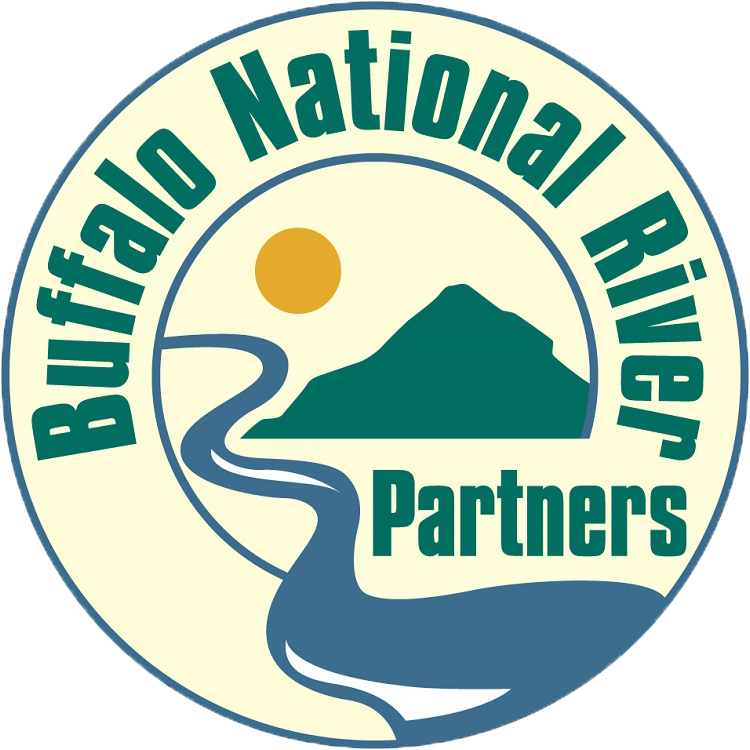Projects
Invasive Species Removal
BNRP is concerned with non-native invasive species within or near BNR Park. The National Invasive Species Council defines non-native invasive species as “alien species whose introduction does or is likely to cause economic or environmental harm or harm to human health.” This includes plants, animals and microorganisms. Besides the plant species, feral hogs, Japanese Beetles, and Chestnut blight fungus are some other introduced species causing alterations in the habitats along the Buffalo River.
Each year, a group of volunteers meet to remove invasive species at the BNR Park. Please join us to help the BNR Park remain as close to it’s original state as we can.
Native Plant Beds At Tyler Bend
An ongoing project of BNRP is the maintenance of the Native Plant Beds at the Tyler Bend Visitor Center. The project began under the direction of past board member and horticulturist, Pam Stewart who noticed the spread of invasive species at Tyler Bend. Once these plants were identified and removed, plants native to Arkansas and the Ozarks were planted. With much help from Master Naturalists of North Central Arkansas, the beds have thrived. Former board member Dwan Garrison who is also a member of Master Naturalists, directs four workdays per year to keep the beds healthy and beautiful.
Boxley Valley Elk Viewing And Mill Tours
Each October, thousands of tourists visit the enchanting and historic Boxley Valley in the upper district of Buffalo National River. BNRP members volunteer every weekend to assist park service personnel answer questions, give directions and welcome the travelers who come to view the elk and enjoy the lovely fall colors of the mountains. Visitors are also welcomed to tour the preserved Boxley Mill which is only open in the fall. BNRP members help with these tours as well. Volunteers are needed each Saturday and Sunday in the month in four locations.
Fundraising
BNRP works directly with the National Park Service to identify projects that require funding above and beyond what is included in the NPS budget. We rely solely on the generosity of our members and others who love the Buffalo River for their support of these projects. Please review the options available for getting involved - your help and support will allow BNRP to continue our efforts to promote and protect the Buffalo River.
Educational Programs
To appreciate the Buffalo National River and the environment around it means you know it and you know about it; you’ve hiked a trail, paddled a few river miles, studied the plants and animals that inhabit the place, camped at one of the many campgrounds or even along the banks of the river, enjoyed a long night of talking, storytelling, eating, playing music or just staring at the flames around a campfire.
Our education programs aim to bring people a little closer to experiencing our national treasure by offering activities such as monthly library programs that invite both experts in their field of study as well as local experts who have long historical sight about this river and surrounding communities, to share their knowledge about this place. The range of education offerings includes focused trail walks, invasive species education and eradication, author talks, presentation by experts in specific aspects of the water ecology and habitat preservation, cultural education through the mediums of music, art and photography, and First Day hikes. On a regular basis, people come together to listen, to see, and to touch a variety of aspects of our common environment, further reminding us of the value of the Buffalo National River.
River Clean Up
BNRP sponsors three river clean ups a year with a seasonal focus on different sections of the river. The Buffalo’s upper section gets a Spring clean-up, the middle river in the Summer and the lower river in the Fall. River concessioners provide boats and shuttles, volunteers work diligently to recover tires, visitor debris, and old dump sites from the Buffalo and its tributaries, and Buffalo National River personnel properly dispose of the recyclables and recovered rubbish. All together our collaborative teammates work throughout the year and leave the Buffalo’s water quality, health and habitat better than we found it.






